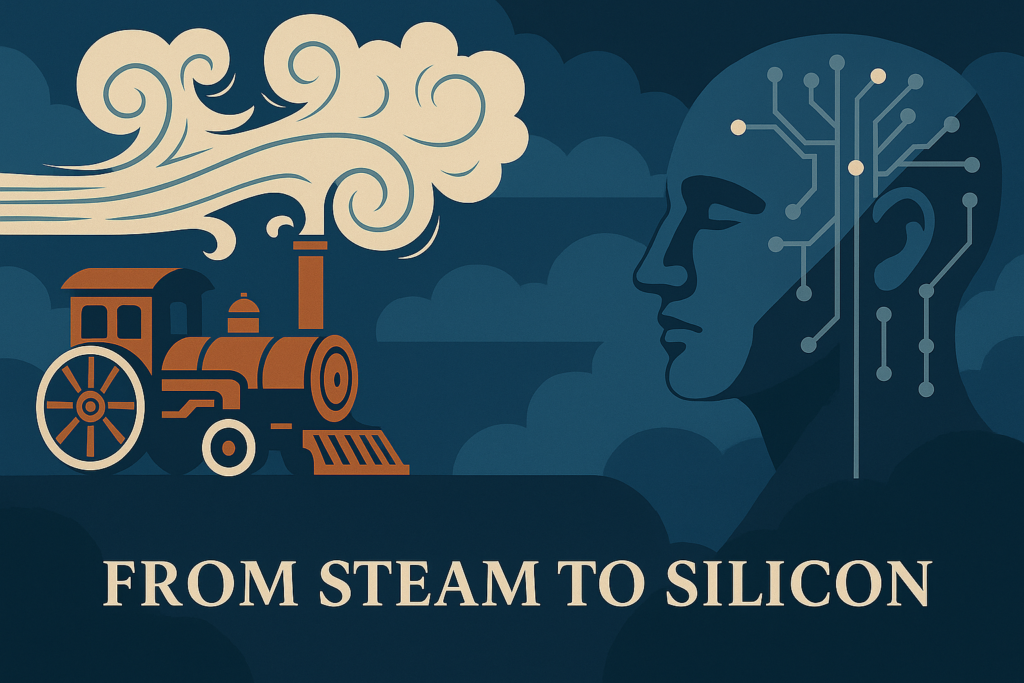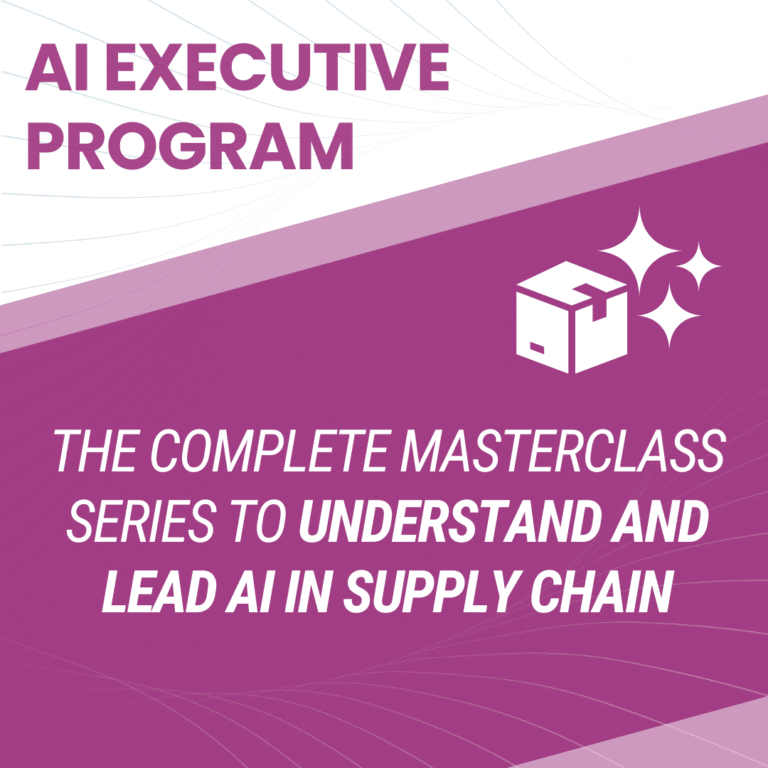
From Steam to Silicon: A Fourth Revolution in Disguise
History has not been kind to those who underestimate revolutions. In the late 18th century, steam engines redefined production, labor, and logistics. In the 20th, electricity and assembly lines reorganized the fabric of global economies. Then came computing and automation: reducing error, enhancing throughput, and orchestrating complexity. Now, we stand at the gates of a fourth industrial revolution. But this time, we are not mechanizing muscles; we are replicating cognition.
Artificial Intelligence, in its modern form, is not just the latest optimization fad. It is a new epistemological tool: a new way of understanding, predicting, and deciding in environments saturated with noise, volatility, and nonlinearity. And nowhere is that environment more vivid than in supply chains.
From Mechanization to Cognition
The first three industrial revolutions primarily dealt with the external world: raw materials, physical motion, visible outcomes. The fourth, in contrast, concerns the inner mechanics of decision-making. It is an inward revolution: intangible, invisible, and yet foundational.
Steam redefined distance. Electricity created scale. Computing gave us visibility. Now AI adds adaptation, context, and foresight. It addresses not just what and how, but why and what if. It builds mental models of the world and evolves them in real time, creating a probabilistic layer of interpretation and anticipation.
I’ve seen this shift brewing for years, even before generative AI reached the mainstream. One of the earliest signs came during a project in the early 2010s, when I was implementing a VOIP virtual call center for a weather-sensitive service company. The call routing algorithm wasn’t AI — just rules-based logic — but even then, we had to demystify the algorithm to gain the trust of regional managers. They needed to know why calls were being redirected, who was deciding, and how we were sure it was fair. No trust, no adoption.
Artificial Intelligence and the Supply Chain: A Natural Fit, With Friction
Supply chains are fertile ground for AI because they are:
- Data-rich but insight-poor
- Complex yet patterned
- Operationally rigid but strategically dynamic
- Cross-functional by design
These attributes create both opportunity and fragility. AI can anticipate demand shifts by incorporating nonlinear signals like weather patterns or social sentiment. It can detect invoice fraud without being explicitly told what fraud looks like.
But this power comes at a cost: opacity, dependency, and a false sense of autonomy. AI does not just predict: it nudges. It silently reshapes decision boundaries. And in a world that prizes accountability, this becomes both a legal and operational paradox.
The Black Box Paradox
With complexity comes opacity. Many AI systems operate as black boxes: high performance, low explainability. And I’ve been inside that paradox more than once.
When I was building a civic tech platform to help people vote on legislation, one of the hardest questions wasn’t technical. It was ethical. How can we trust the platform isn’t faking votes? How do you prove integrity without exposing the code? I had taken some shortcuts in the code — as many startups do — and open-sourcing it would have meant exposing both technical debt and security vulnerabilities. Yet without transparency, trust was elusive.
Even years before, working on a telco machine learning project, I found myself on the ground with field technicians, laptop in hand, predicting where the worst network faults were buried. They challenged me. “Show us.” I told them: Open that pit. That one’s a mess.
It was a black box. But it worked. And still, they needed to see it work with their own eyes before trusting it.
That’s the paradox: performance doesn’t guarantee trust. And trust doesn’t come from metrics alone.
Beyond Logic: A New Governance Mindset
Traditional supply chain systems are logic-based: thresholds, workflows, audit trails. They are transparent by design. AI flips that. It’s inductive. It learns from examples, and it rarely explains itself in ways humans can parse.
Forecasting becomes a neural network trained on 100+ features. Inventory optimization moves from fixed rules to dynamic agents. Procurement risk isn’t scored, it’s inferred.
You cannot govern these systems the same way you governed ERP. Leadership must evolve from control to calibration, from specification to supervision. You need a new kind of literacy.
Why AI Isn’t Just a Tech Upgrade
Too many AI discussions are treated like IT rollouts. But AI adoption is not a CIO’s side project. It’s a CEO’s strategic decision. Because AI doesn’t just change tools; it changes the structure of work, the nature of decisions, and the shape of accountability.
Leaders must ask:
- How do we build internal fluency around AI?
- How do we manage the tension between performance and explainability?
- Who owns a decision when AI and human judgment diverge?
These are not technical questions. They are epistemic ones.
From Blind Trust to Informed Confidence
We are at a historical inflection point. AI is neither magic nor menace: it is a mirror. It reflects both our ambitions and our blind spots. The challenge isn’t to blindly trust or endlessly delay. The challenge is to build the maturity, skepticism, and literacy to lead wisely.
The black box paradox will not go away. But it can be managed. And managing it well may become the defining competency of the next generation of supply chain leadership.
What you should keep in mind
Why is AI considered the Fourth Industrial Revolution?
Because unlike previous revolutions that mechanized muscles or automated processes, AI replicates cognition: judgment, language, and foresight. It adds adaptation and context, reshaping how we decide and lead.
Why are supply chains a natural fit for AI?
Supply chains are data-rich but insight-poor, complex yet patterned, and cross-functional by design. AI thrives in this environment by detecting nonlinear demand signals, anticipating risks, and optimizing decisions dynamically.
What is the Black Box Paradox in Artificial Intelligence?
AI systems often deliver high performance but little transparency. Leaders face a paradox: strong results without explainability do not guarantee trust. Trust must be built through demonstration, governance, and literacy.
How should leaders govern AI differently from traditional systems?
Traditional ERP and workflow tools are transparent and rule-based. AI is inductive and opaque. Leaders must shift from control to calibration: supervising, testing, and cultivating AI literacy across teams.
Why is AI adoption a CEO-level decision, not just an IT project?
AI does not just change tools: it changes work structures, decision accountability, and governance. Adoption requires strategic oversight at the highest level to balance performance, explainability, and responsibility.


